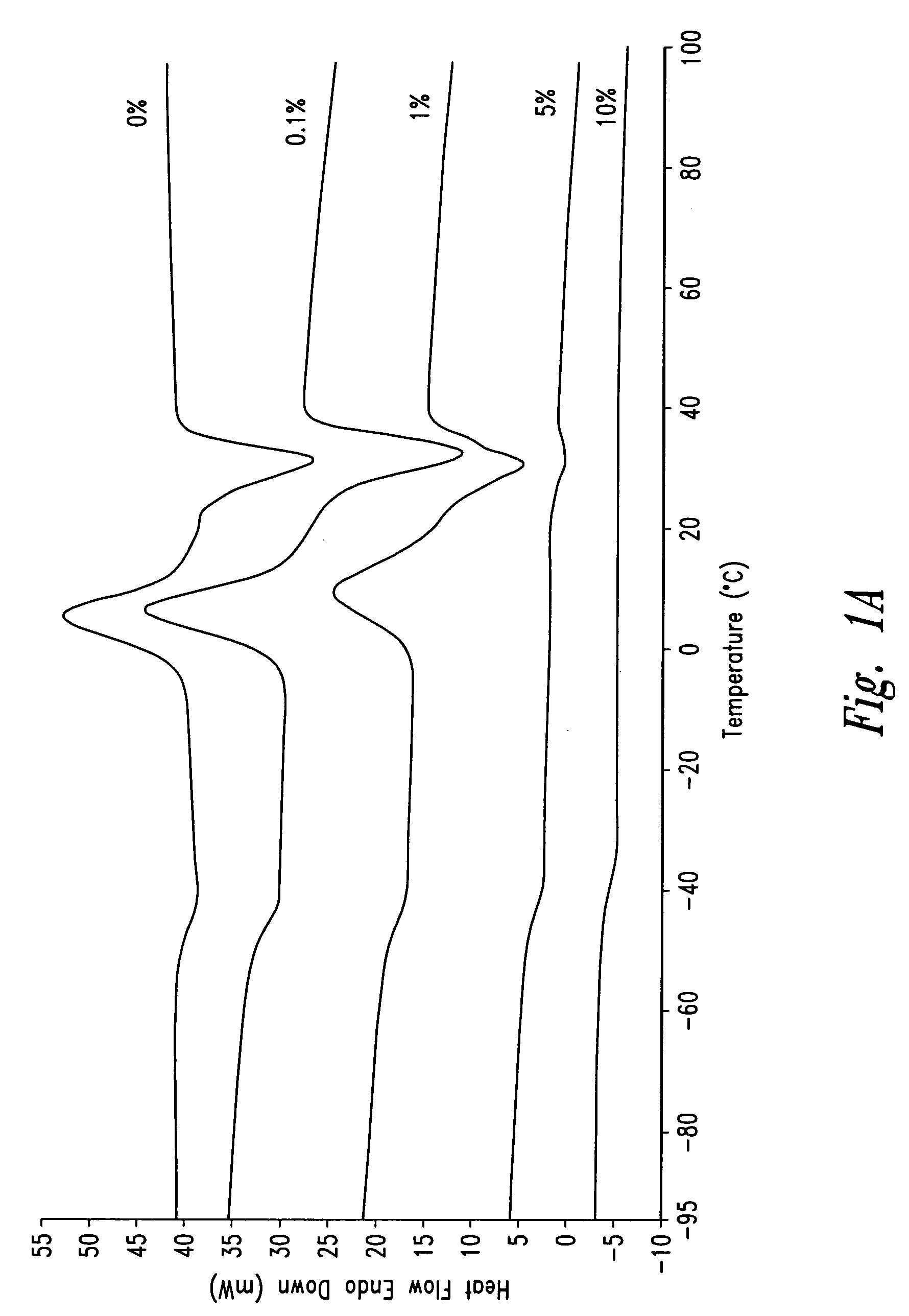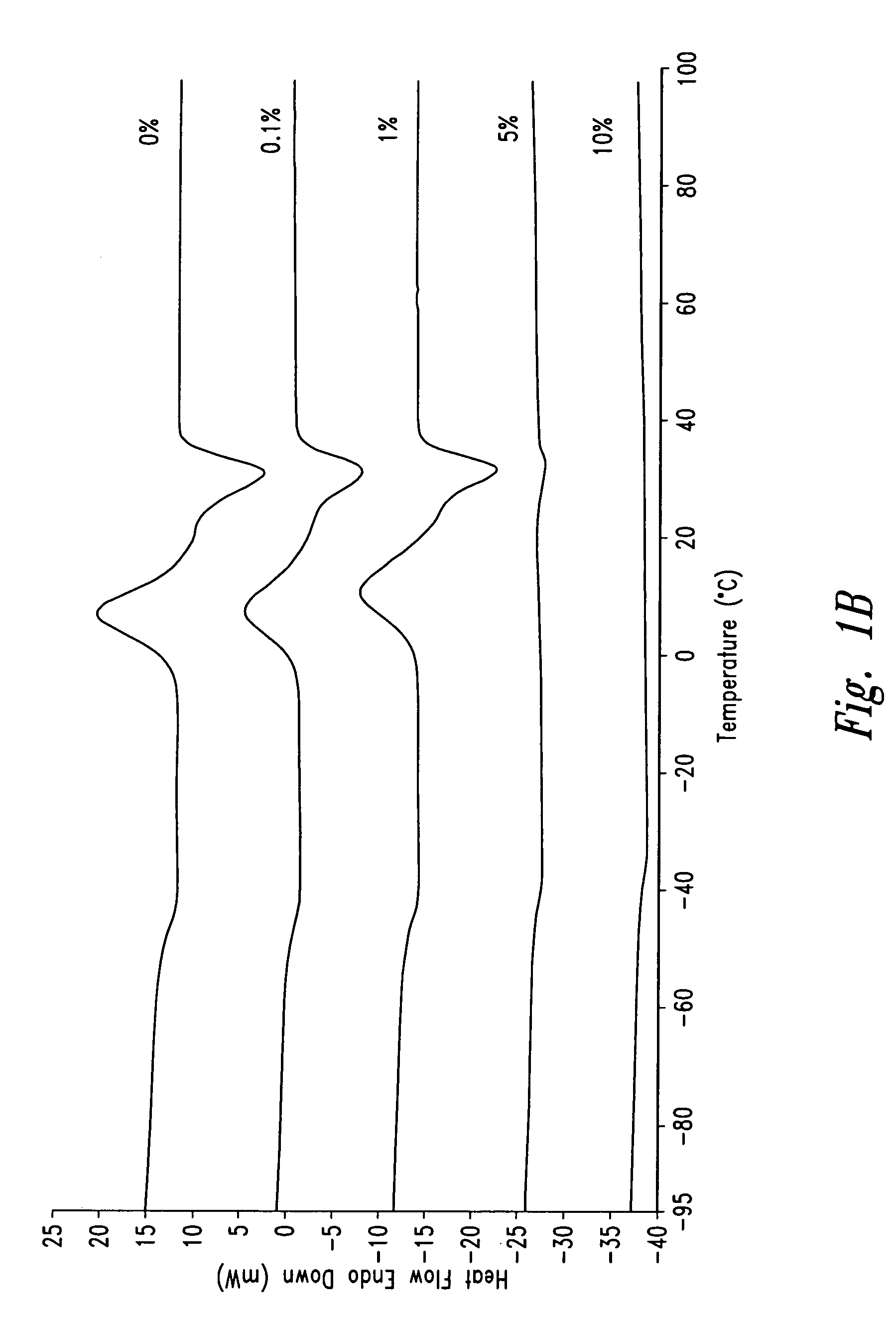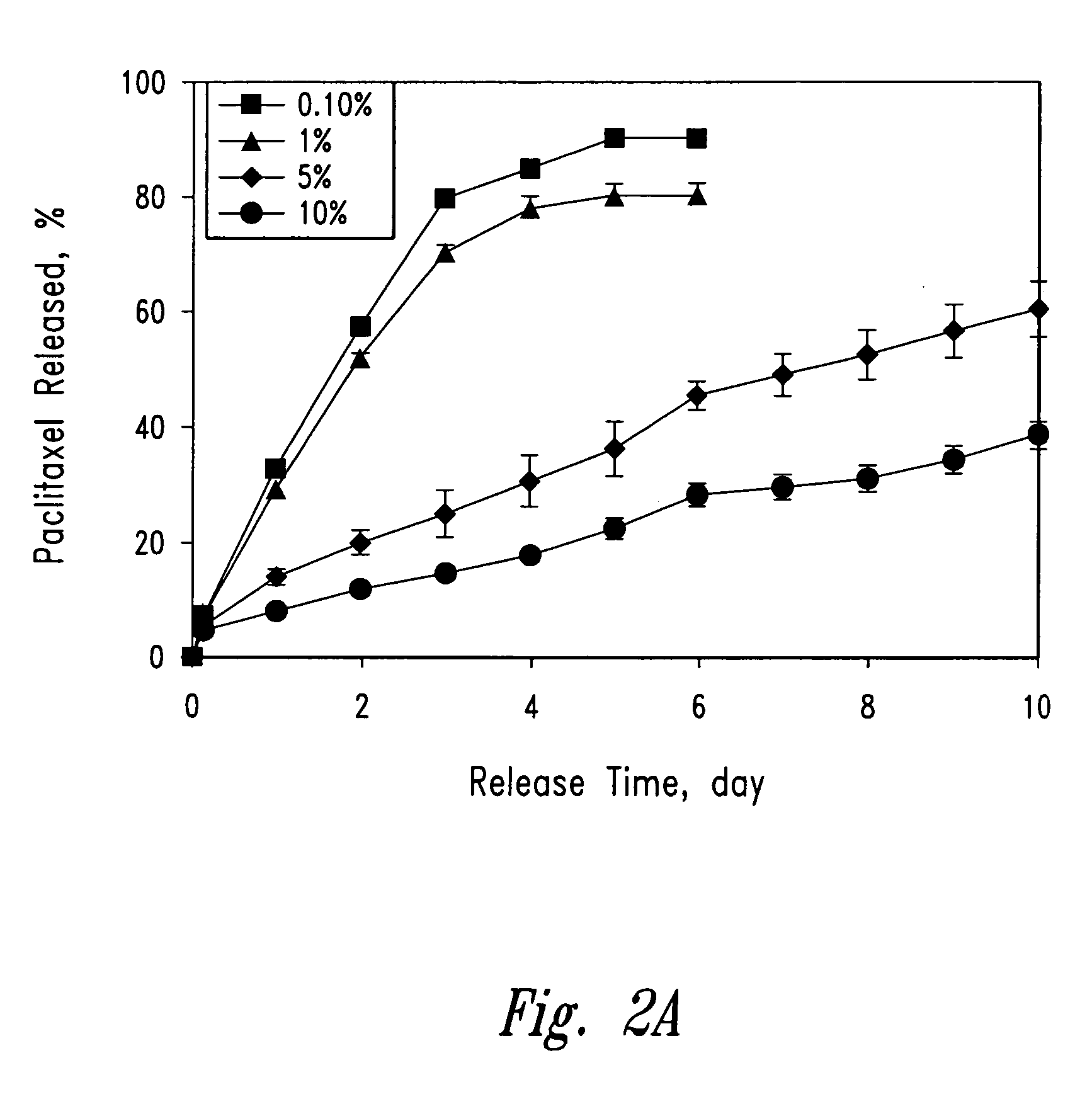Polymeric systems for drug delivery and uses thereof
a polymer system and drug technology, applied in the field of polymer compounds, can solve the problems of toxicity or irritation of body tissues, need for rapid administration, and potential toxicity of curing agents, and achieve the effect of more solid form
- Summary
- Abstract
- Description
- Claims
- Application Information
AI Technical Summary
Benefits of technology
Problems solved by technology
Method used
Image
Examples
example 1
Synthesis and Characterization of Triblock Copolymers
[0169] (a) Synthesis
[0170] Triblock (TB) copolymers were synthesized through ring opening polymerization using the monomers DL-lactide, glycolide, ε-caprolactone and PEG. Stannous octoate was used as catalyst.
[0171] i. Small Scale Reaction
[0172] TB copolymers were synthesized on a small scale by transferring a total of 20 g reactive monomers, with the desired weight ratios of the reactants, into a 50 mL glass ampoule. Stannous octoate (0.1 mL) was added to the ampoule. The ampoule was connected to a vacuum pump and sealed using a propane MicroTorch. The sealed ampoule was then immersed in a 140° C. mineral oil bath. The oil bath was heated by a hot plate connected to a temperature controller. Immediately after the monomers melted, the ampoule was taken out, vortex mixed, and then put back into the oil bath. The ampoule was maintained in the oil bath at elevated temperature for 3-4 hours. To stop the polymerization, the ampoule...
example 2
Synthesis and Characterization of Paclitaxel / TB Copolymer Paste and Paint Formulations
[0185] (a) Synthesis
[0186] Paclitaxel was purchased from Hauser, Inc. (Boulder, Colo.), and DCM (dichloromethane) was from Fisher Scientific Co. (Hampton, N.H.). TB copolymers were synthesized as described in EXAMPLE 1. Paclitaxel pastes, suitable, for example, for the treatment of cancer, were made from PLC-PEG-PLC 4000-35 / 35 / 30. Paclitaxel paints, suitable, for example, for the prevention of post-surgical adhesion, were made from PLC-PEG-PLC 2000-35 / 35 / 30.
[0187] A TB copolymer was dissolved in DCM at an accurately known concentration (in the range of 10-15% w / w). The polymer solution was centrifuged at 3000 rpm for 0.5 hr and the supernatant was divided into glass beakers and weighed. A paclitaxel DCM stock solution with an accurately known concentration (in the range of 10-20 mg / mL) was prepared using a volumetric flask. Based on the amount of the polymer, the volume of the paclitaxel DCM sol...
example 3
Release of Paclitaxel from PLC-PEG-PLC Paste
[0193] (a) Procedure
[0194] HPLC grade acetonitrile and water were purchased from Calcdon Laboratories (Georgetown, Ontario, CANADA). Phosphates were purchased from BDH Inc. (Toronto, Ontario, CANADA; http: / / www.bdhinc.com). Albumin Fraktion V was bought from Boehringer Mannheim, Germany (now part of F. Hoffmann-La Roche Ltd., Basel, SWITZERLAND, http: / / www.roche.com).
[0195] Paclitaxel loaded PLC-PEG-PLC formulations were weighed (13-17 mg of paste, or 50-100 mg paint) into 14 mL glass test tubes containing 10 mL 0.02 M phosphate buffered saline with 0.8 g / L albumin (in PBSA, pH 7.4). The PBSA solution was made by dissolving 0.32 g sodium dihydrogen orthophosphate (NaH2PO4.H2O), 2.60 g sodium phosphate monohydrate (Na2HPO4), 8.22 g sodium chloride and 0.8 g albumin in 1 L distilled water. The test tube was sealed with a PTFE lined screw cap (Glas-Col, Terre Haute, Ind., http: / / www.glascol.com) and tumbled at about 50 rpm in a 37° C. oven...
PUM
| Property | Measurement | Unit |
|---|---|---|
| Temperature | aaaaa | aaaaa |
| Temperature | aaaaa | aaaaa |
| Temperature | aaaaa | aaaaa |
Abstract
Description
Claims
Application Information
 Login to View More
Login to View More - R&D
- Intellectual Property
- Life Sciences
- Materials
- Tech Scout
- Unparalleled Data Quality
- Higher Quality Content
- 60% Fewer Hallucinations
Browse by: Latest US Patents, China's latest patents, Technical Efficacy Thesaurus, Application Domain, Technology Topic, Popular Technical Reports.
© 2025 PatSnap. All rights reserved.Legal|Privacy policy|Modern Slavery Act Transparency Statement|Sitemap|About US| Contact US: help@patsnap.com



